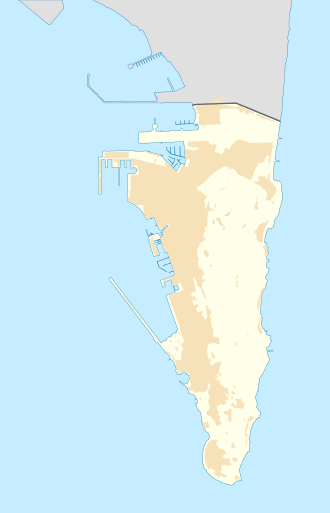| Governor's Lookout Battery | |
|---|---|
| Part of Fortifications of Gibraltar | |
| Signal Station Road, Upper Rock Nature Reserve, Gibraltar | |
 Governor's Lookout Battery in Gibraltar equipped with a BL 9.2 inch gun in 1906 | |
| Site information | |
| Type | Artillery battery |
| Owner | Government of Gibraltar |
| Controlled by | Gibraltar Scouts Association |
| Location | |
Location of Governor's Lookout Battery within Gibraltar. | |
| Coordinates | 36°08′37″N5°20′50″W / 36.14369°N 5.347266°W |
Governor's Lookout Battery is one of the many artillery batteries in the British Overseas Territory of Gibraltar, which served to protect it against its many sieges. It is located off Signal Station Road within the Upper Rock Nature Reserve.
